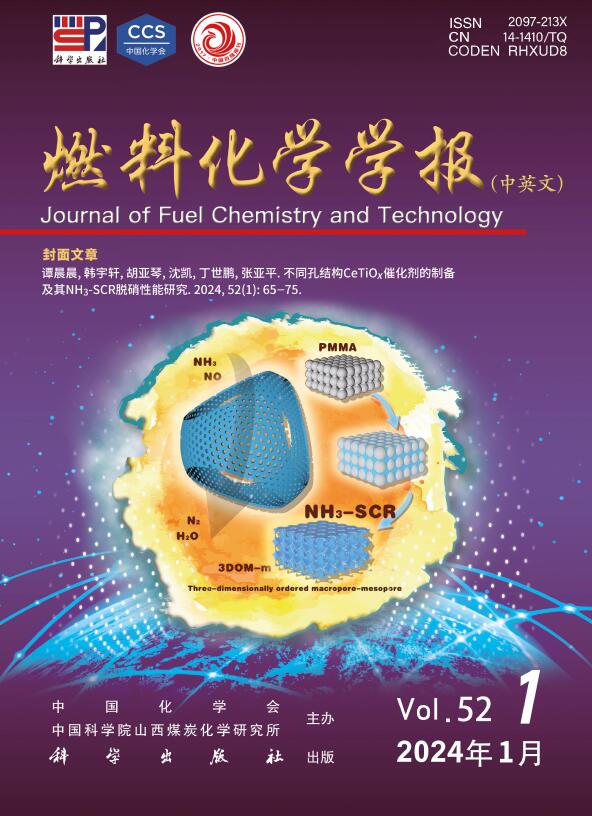Mechanism of NO reduction by CO over single atomic nickel catalyst: DFT and microkinetic study
Q3 Energy
引用次数: 0
Abstract
The microscopic reaction mechanism of NO reduction by CO on the graphene-supported single-atom Ni catalyst (Ni/G) was investigated by using density functional theory (DFT) and microkinetic modeling. The results indicate that as the most probably pathway for the NO reduction by CO over the Ni/G catalyst, two NO molecules adsorb onto the Ni atoms via the Langmuir-Hinshelwood mechanism and then transform to N2O and active oxygen (O*). Subsequently, N2O is adsorbed on the Ni surface and reduced to N2 and O*. Finally, CO reduces O* to form CO2, releasing the active Ni sites. From the energy barrier perspective, the transformation of NO to N2O and O* has a higher energy barrier, which controls the NO reduction reaction rate. From the microkinetic perspective, the reaction temperature has a significant effect on the rate of O* reduction with CO, which is lower than that of N2O reduction. As a result, the Ni atoms are gradually occupied by O*, which may inhibit the adsorption and reduction of NO, leading to the deactivation of the Ni/G catalyst.
CO在单原子镍催化剂上还原NO的机理:DFT和微动力学研究
采用密度泛函理论(DFT)和微动力学模型研究了CO在石墨烯负载的单原子Ni催化剂(Ni/G)上还原NO的微观反应机理。结果表明,CO在Ni/G催化剂上还原NO最可能的途径是两个NO分子通过Langmuir-Hinshelwood机制吸附在Ni原子上,然后转化为N2O和活性氧(O*)。随后,N2O被吸附在Ni表面,还原为N2和O*。最后,CO还原O*形成CO2,释放活性Ni位点。从能量势垒来看,NO向N2O和O*的转化具有较高的能量势垒,控制着NO还原反应速率。从微动力学的角度来看,反应温度对CO还原O*的速率有显著影响,低于N2O还原的速率。因此,Ni原子逐渐被O*占据,这可能会抑制NO的吸附和还原,导致Ni/G催化剂失活。
本文章由计算机程序翻译,如有差异,请以英文原文为准。
求助全文
约1分钟内获得全文
求助全文
来源期刊

燃料化学学报
Chemical Engineering-Chemical Engineering (all)
CiteScore
2.80
自引率
0.00%
发文量
5825
期刊介绍:
Journal of Fuel Chemistry and Technology (Ranliao Huaxue Xuebao) is a Chinese Academy of Sciences(CAS) journal started in 1956, sponsored by the Chinese Chemical Society and the Institute of Coal Chemistry, Chinese Academy of Sciences(CAS). The journal is published bimonthly by Science Press in China and widely distributed in about 20 countries. Journal of Fuel Chemistry and Technology publishes reports of both basic and applied research in the chemistry and chemical engineering of many energy sources, including that involved in the nature, processing and utilization of coal, petroleum, oil shale, natural gas, biomass and synfuels, as well as related subjects of increasing interest such as C1 chemistry, pollutions control and new catalytic materials. Types of publications include original research articles, short communications, research notes and reviews. Both domestic and international contributors are welcome. Manuscripts written in Chinese or English will be accepted. Additional English titles, abstracts and key words should be included in Chinese manuscripts. All manuscripts are subject to critical review by the editorial committee, which is composed of about 10 foreign and 50 Chinese experts in fuel science. Journal of Fuel Chemistry and Technology has been a source of primary research work in fuel chemistry as a Chinese core scientific periodical.
 求助内容:
求助内容: 应助结果提醒方式:
应助结果提醒方式:


